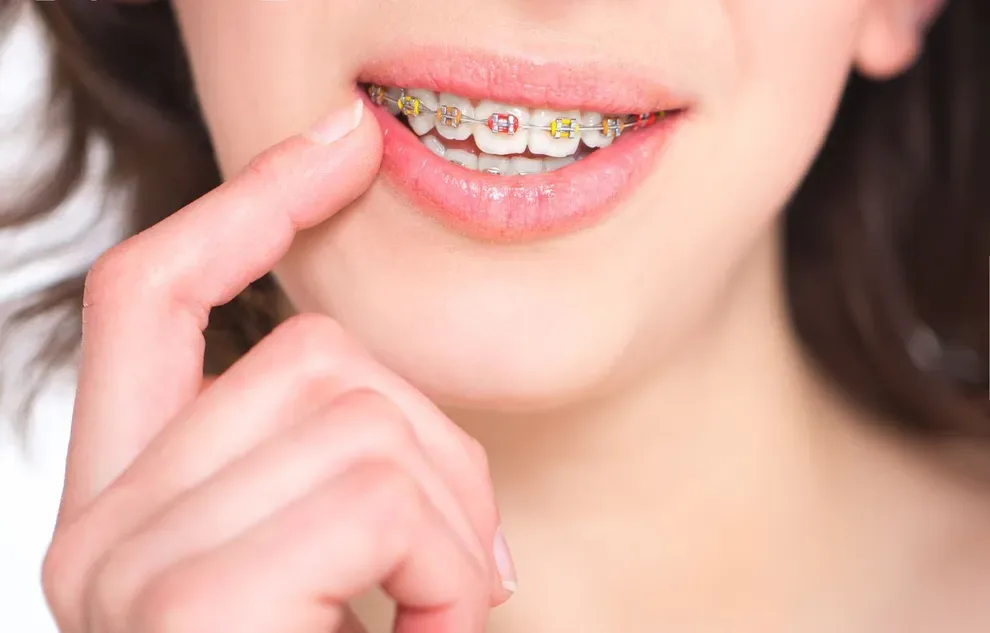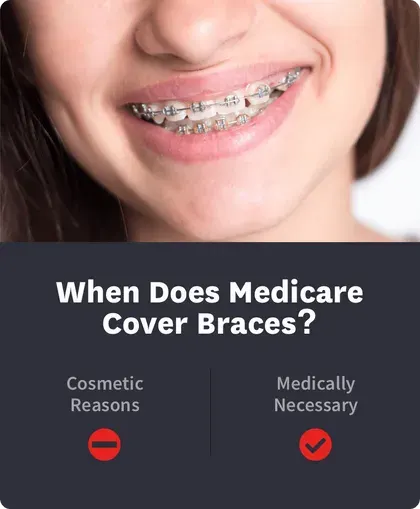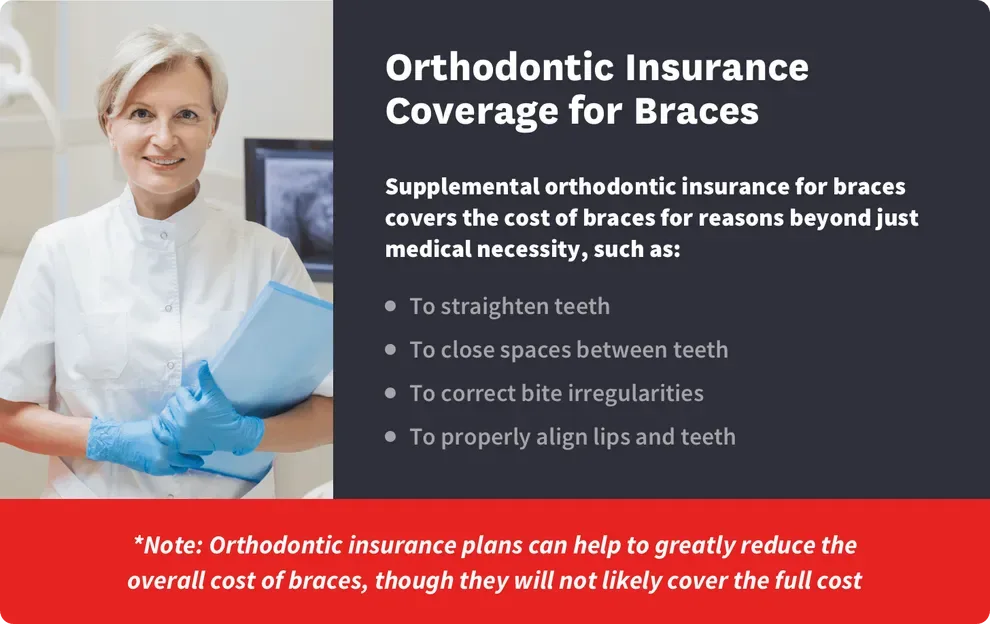Does Medicaid Cover Braces?

Table of Contents
- Key Facts
- Medicaid Plans
- Braces Coverage
- Orthodontic Insurance
- Paying for Orthodontic Care
- Other Options
The answer is that it depends. Medicaid is a health-care program run by the federal government, but coverage varies from state to state.
Under federal guidelines, all states must provide dental coverage to children under Medicaid and the Children’s Health Insurance Program (CHIP). This means states must pay for children’s dental braces and orthodontics if the treatment is deemed medically necessary.
Adult orthodontic coverage is not mandated by federal guidelines. In some states, Medicaid will pay for adult orthodontic care if it is deemed medically necessary. Other states provide no orthodontic care coverage for adults through Medicaid.
There are additional areas of uncertainty as well. Different states may determine what is categorized as “medically necessary” differently. Age limits may also vary. Some states consider anyone under 18 years old a child, while others consider children to be under the age of 21.
Key Facts about Medicaid & Braces
Medicaid is a federally-run health-care program, but coverage (including dental coverage) varies by state.
The Children’s Health Insurance Program (CHIP) requires that all children covered by Medicaid receive dental coverage and care for any dental issues that are deemed a medical necessity. This may include braces.
Adult dental care coverage through Medicaid is not mandated by federal guidelines. Some states provide no dental coverage or emergency coverage. Others provide comprehensive adult dental care, which may include braces if they are deemed medically necessary.
For those who are seeking orthodontic services that aren’t covered by their Medicaid, low-cost options may include dental schools, low-income braces programs, grants, community organizations, and payment plans.
Medicaid Health Plans
As of June 2020, 68 million people in the United States receive health-care coverage through Medicaid. Medicaid provides affordable health coverage to qualifying low-income adults, children, elderly individuals, people with disabilities, and pregnant women.
For adults, dental care coverage varies by state. States can choose whether they provide dental benefits or not.
Children covered by Medicaid automatically receive dental benefits.
These basic dental services must be provided to children covered by Medicaid:
Dental health maintenance
Pain relief services
Treatment of infections
Teeth restoration services
Medicaid Coverage for Braces

Medicaid coverage for braces and orthodontic treatment is based on state funding, and coverage options vary from state to state. There is no standard for Medicaid treatment and braces coverage, however. To be considered for braces, the treatment must be considered medically necessary.
Medicaid coverage for braces is very different between children and adults because of the Children’s Health Insurance Program (CHIP).
When does Medicaid Cover Braces for Children?
CHIP guidelines require that children covered by Medicaid receive the Early and Periodic Screening, Diagnostic and Treatment (EPSDT) benefit. Through this screening, any problems needing treatment that are deemed medical necessities must be identified. The child must then be referred to a qualifying dentist or specialist for treatment.
Malocclusion (teeth misalignment) should qualify as a medical necessity and be covered under Medicaid if it’s an orthodontic issue requiring treatment. If the dentist or orthodontist that the child is referred to prescribes braces treatment for the misalignment, there should be coverage under Medicaid.
As an alternative to Medicaid, some states provide braces for low-income children. To find out if you live in one of these states, contact your Medicaid caseworker or state health department.
When does Medicaid Cover Braces for Adults?
Compared to children, adults may have a harder time getting coverage for braces treatment with Medicaid.
According to Medicaid.gov, less than half of states currently provide comprehensive dental care to adults. Most states provide some level of coverage for emergency dental services, but there are no minimum requirements or orthodontic coverage.
States that offer orthodontic services for adults through Medicaid will usually only do so when it is considered a medical necessity.
Each state may define what they consider a medical necessity differently. Some may include the following dental issues:
Malocclusion due to trauma or injury
Craniofacial abnormalities or deformities
Misaligned teeth in conjunction with another medical condition or syndrome
Malocclusion deemed to be severely handicapping and impacting physical and/or emotional well-being
Congenital conditions, such as cleft palate or missing teeth
Overjet and reverse overjet of specific measurements
Crossbite in the back of the mouth that keeps teeth from matching up
It can be difficult to know what is going to be considered medically necessary and therefore what will be covered through Medicaid. Generally speaking, dental conditions causing extreme difficulties with everyday life, such as problems eating or talking, are most likely to be considered medically necessary.
Braces for aesthetic purposes are unlikely to be considered necessary.

Orthodontic Insurance
If the cost of braces is not covered by the Medicaid plan in your state, you could purchase a supplemental orthodontic insurance plan. Even major medical insurance plans rarely include orthodontic coverage for adults and only some offer coverage for children under 18.
Supplemental orthodontic insurance for braces covers the cost of braces for reasons beyond just medical necessity, such as the following reasons:
To straighten teeth
To close spaces between teeth
To correct bite irregularities
To properly align lips and teeth
Orthodontic insurance plans can help to greatly reduce the overall cost of braces, though they will not likely cover the full cost. These plans are meant to supplement the costs of devices, like braces, that are used to fix abnormalities in the teeth or jaw. Orthodontic insurance plans are offered by most major insurance companies.

How to Pay for Braces or Other Types of Orthodontic Care
Braces can come with a price tag of up to $8,000 or more. Few families have the financial means to pay that much out of pocket.
Fortunately, there are ways to make the cost of braces more affordable. Consider these ways to get braces at a lower price tag:
Organizations, such as Smiles Change Lives, offer programs that cover the costs of braces for children ages 7 to 18. You must apply to be part of the program, meet certain qualifications, and pay a $650 financial investment per child.
For families that are near the poverty line, additional Medicaid and CHIP grants are sometimes available to help cover health-care expenses. You will need to check with your state’s Medicaid plan to see if your family qualifies.
Many universities around the country, such as the University of Colorado School of Dental Medicine or the University of California San Francisco School of Dentistry, offer high-quality dental and orthodontic services from well-trained students and staff at affordable prices.
If your family does not qualify for any programs that offer grants or free braces, ask your orthodontist about setting up a payment plan. While you will still have to pay for the braces yourself, paying in installments can make the payment process more manageable.
Other Options
Medicaid insurance offers affordable health coverage for millions of Americans. Unfortunately, braces are not typically covered by Medicaid. If you or your child needs braces, you may need to get creative about how you pay for them.
Before you pay thousands of dollars out of pocket for braces, explore some of the available options to reduce the costs. If those options don’t work out, you can always purchase a supplemental orthodontic plan.
You can also look into other forms of orthodontic treatment that are more affordable, such as doctor-monitored, at-home aligners. You may be able to get the straight smile you want with a shorter treatment timeline and lower overall cost than braces. While some cases of misalignment may be too severe to correct with clear teeth aligners, this form of tooth straightening works well for most people with mild to moderate cases of misalignment.
Medicaid for Braces Frequently Asked Questions
For children, Medicaid is required by law to cover braces for an overbite if the orthodontic evaluation is that treatment is medically necessary. For adults, coverage for braces depends on the state where you undergo treatment and orthodontic evaluation. Some states may provide Medicaid coverage for orthodontic braces but only if the treatment is deemed medically necessary.
Dental braces are considered medically necessary when they treat a condition or prevent a condition, injury, or symptoms. The condition treated by orthodontic braces must affect oral health or interfere with chewing or speech.
Examples of instances deemed medically necessary include using braces to reposition teeth to restore optimal chewing function, making bite adjustments to treat temporomandibular joint disorders, or preventing sleep apnea due to teeth restricting airflow.
